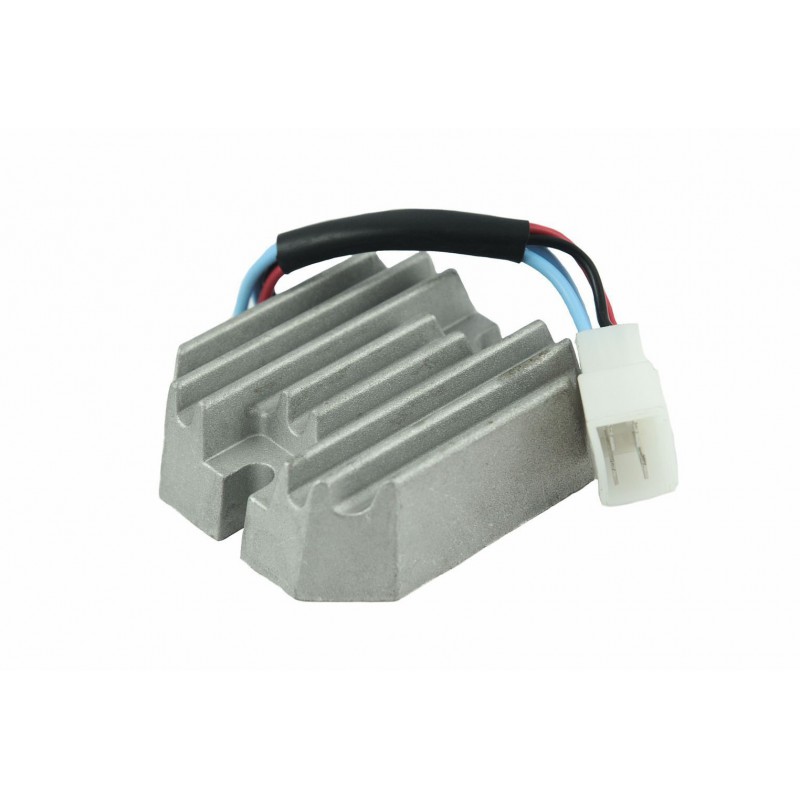
Voltage regulator
The voltage regulator is a key component in the tractor's electrical system, ensuring stable charging voltage and proper operation of all electrical devices. Regular maintenance and inspection can prevent many problems, and quick response to the first signs of regulator damage will help avoid more serious failures. If you encounter voltage problems, troubleshooting your regulator should be one of your first steps.
How does a voltage regulator work?
The voltage regulator monitors the voltage generated by the alternator or generator. When the output voltage exceeds a certain value (usually around 13.8-14.4V for 12V systems), the regulator limits the flow of excitation current to the alternator, reducing its efficiency. When the voltage drops below the set level, the regulator increases the excitation current flow, which in turn increases the efficiency of the alternator. This keeps the voltage within the set range, preventing overcharging of the battery and protecting electrical components from damage.
Common voltage regulator problems:
- Excessive voltage: Can overcharge the battery, which shortens its life and may cause electrolyte leakage. May damage sensitive electrical components.
- Low Voltage: May cause the battery to be undercharged, making the tractor difficult to start and shortening the life of the battery. It can lead to insufficient power to the electrical system, causing problems with lighting and other electrical devices.
- Failure to charge: Often caused by a faulty voltage regulator or alternator. It may be the result of damaged wiring or connections.
Voltage Regulator Maintenance and Repair:
- Regular Check: Check the charging voltage with a multimeter. The voltage should be approximately 13.8-14.4V with the engine running. Check the battery condition and make sure it is properly charged.
- Checking Cables and Connections: Make sure all cables are securely connected and undamaged. Clean the connectors regularly to prevent corrosion.














